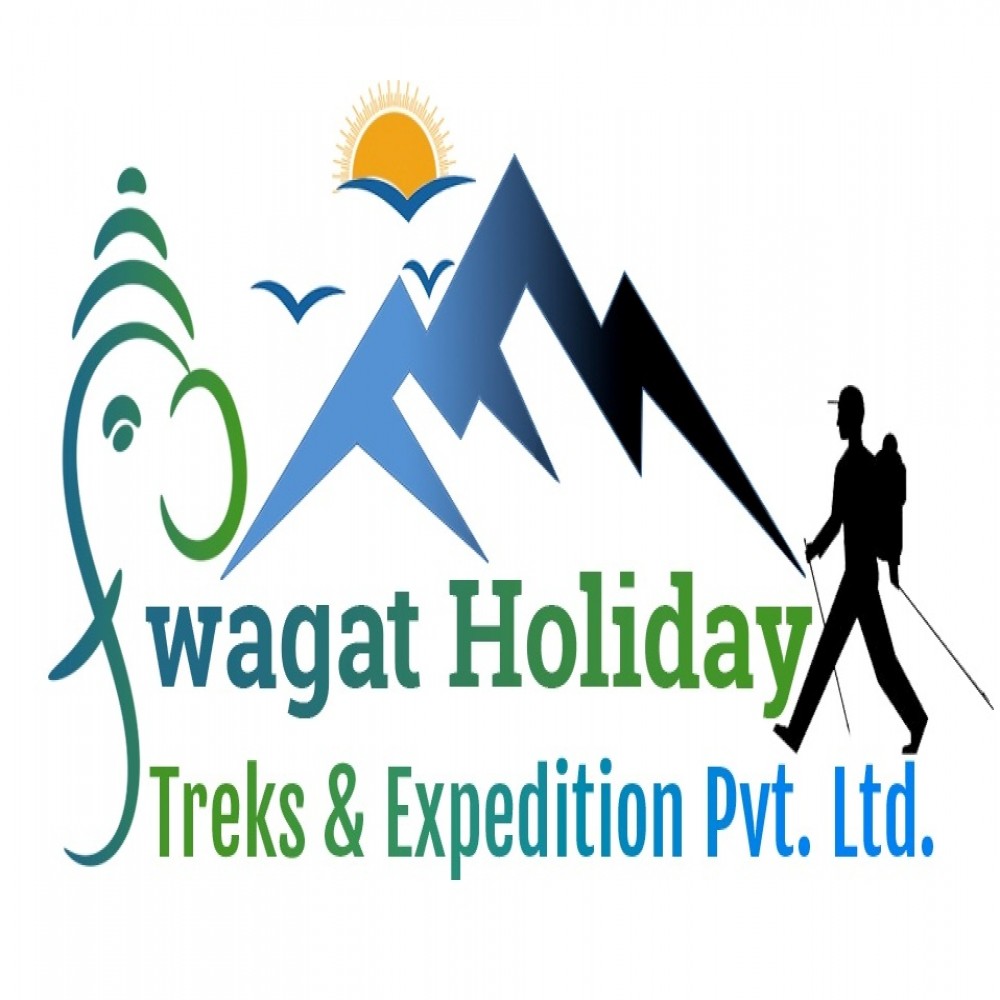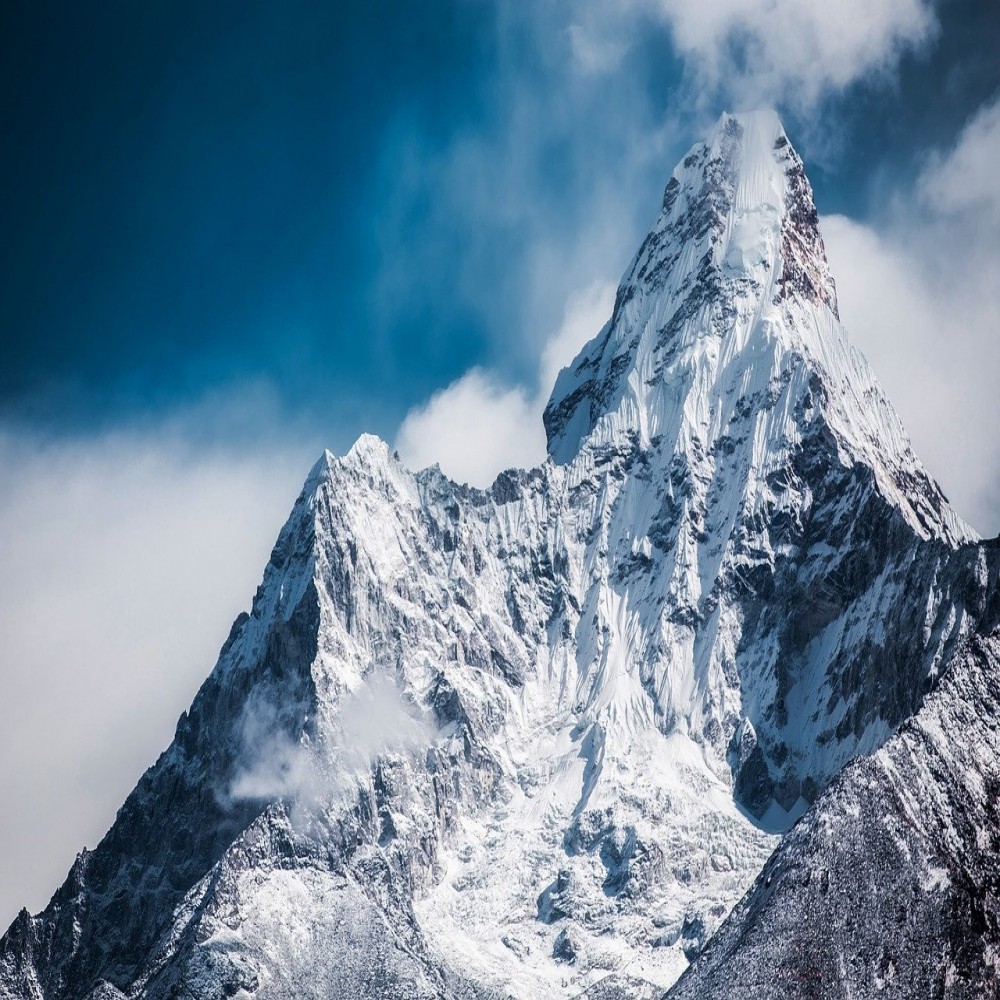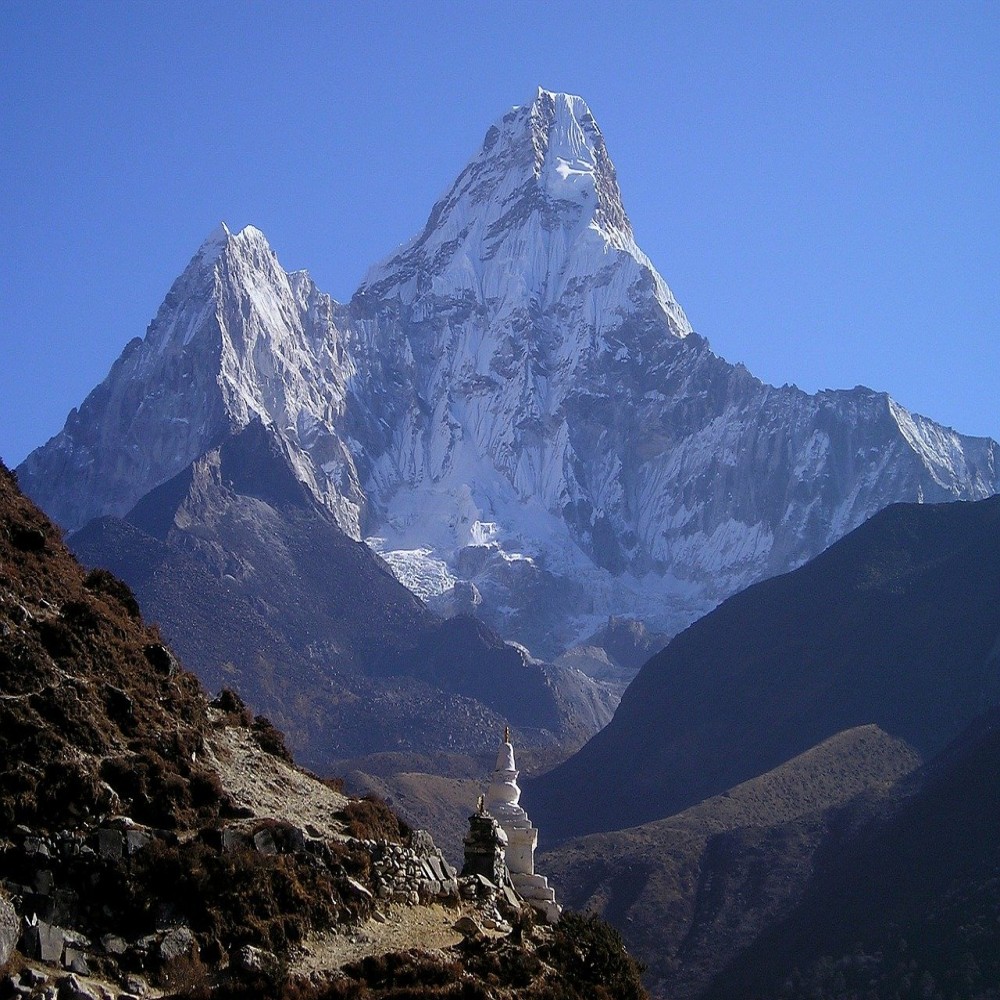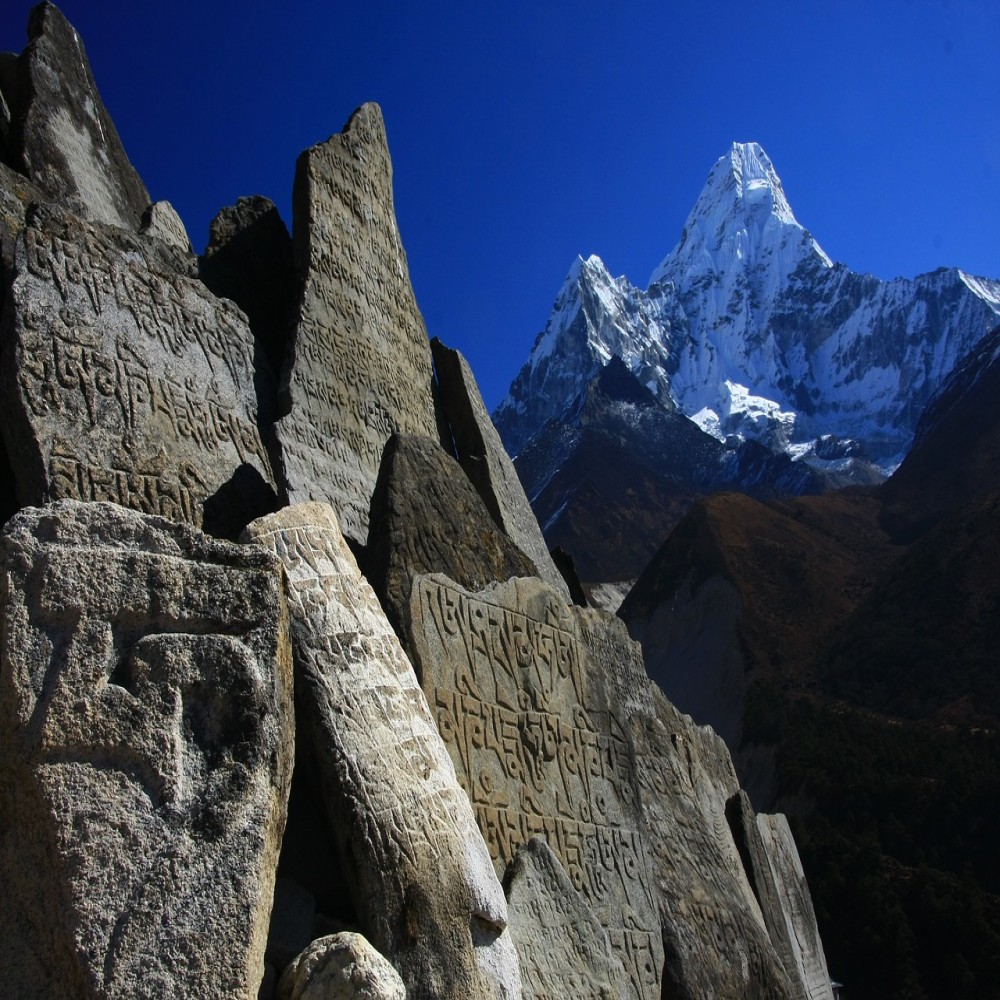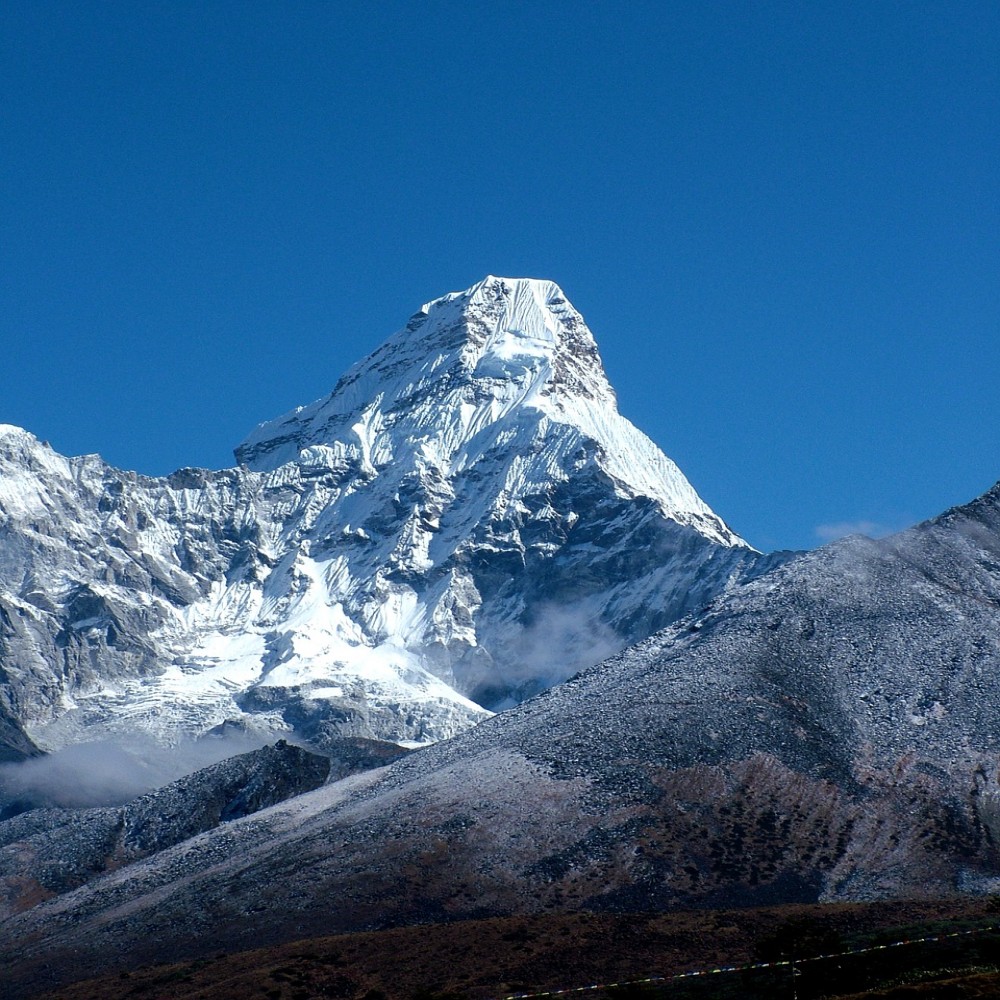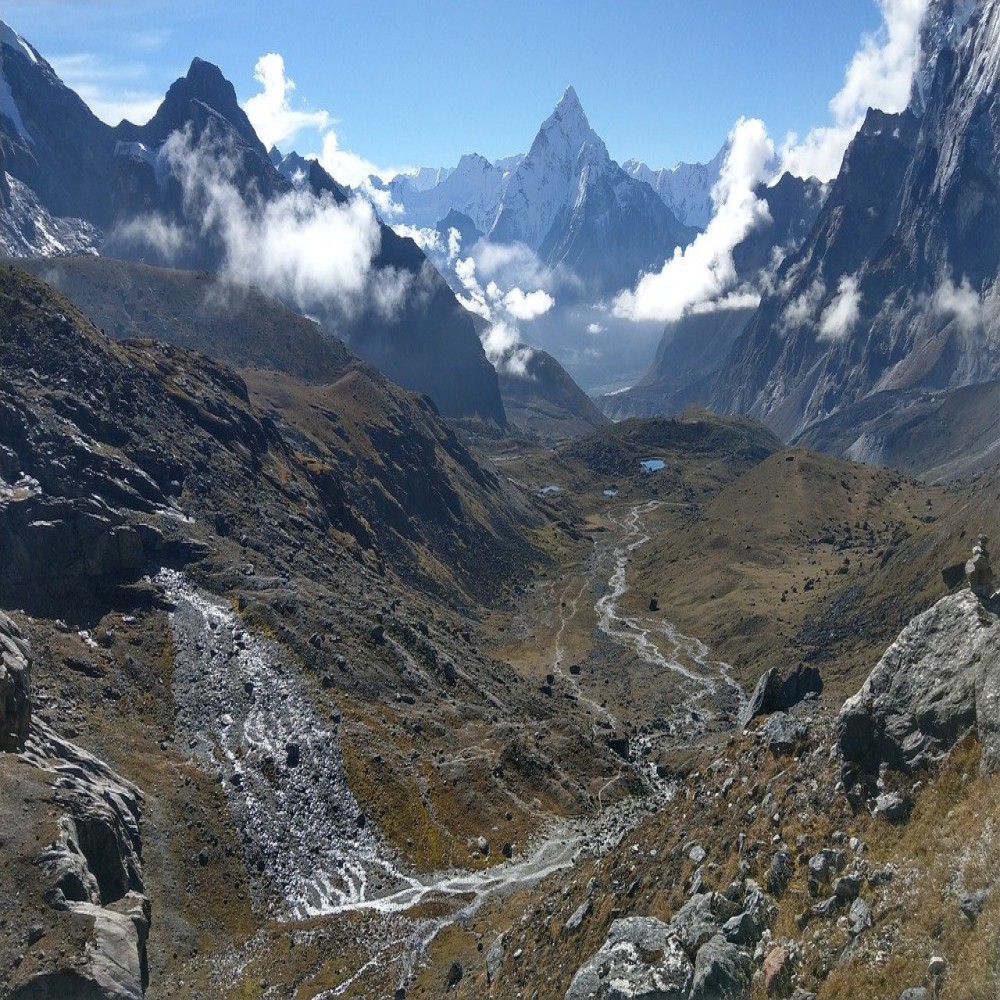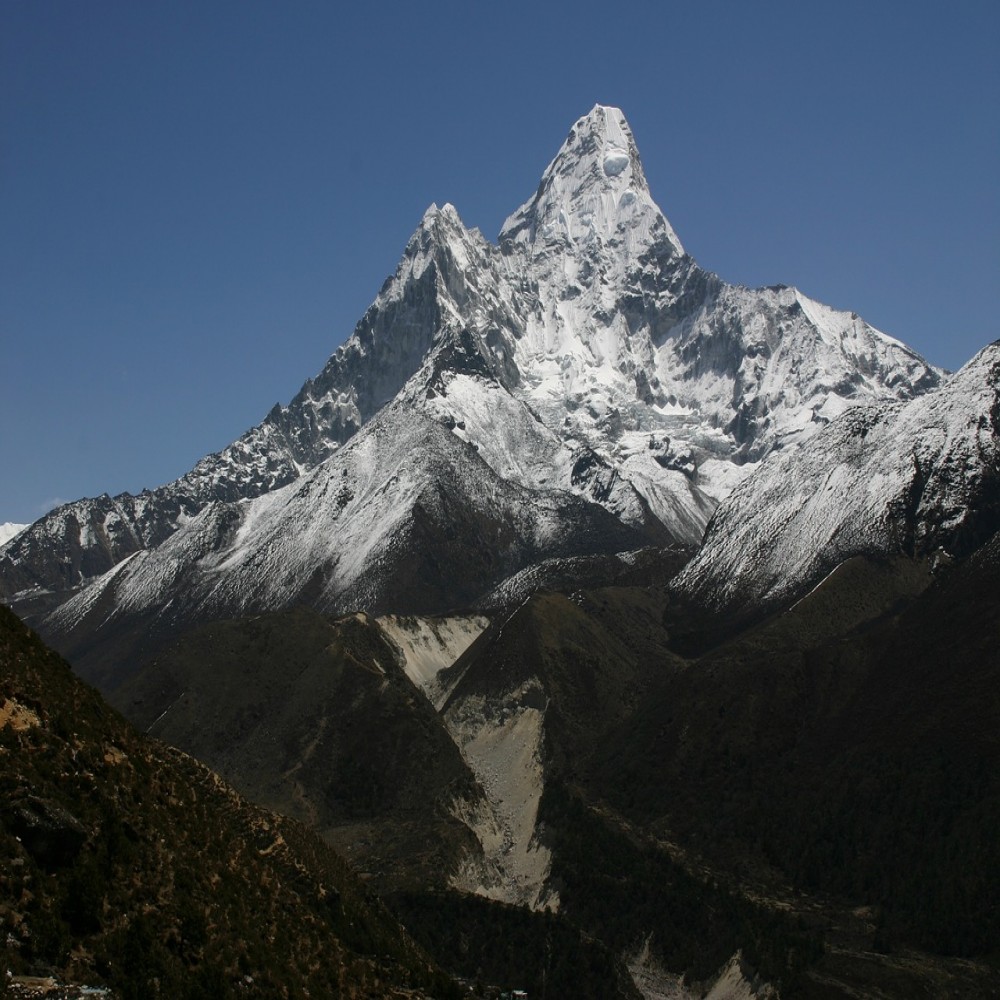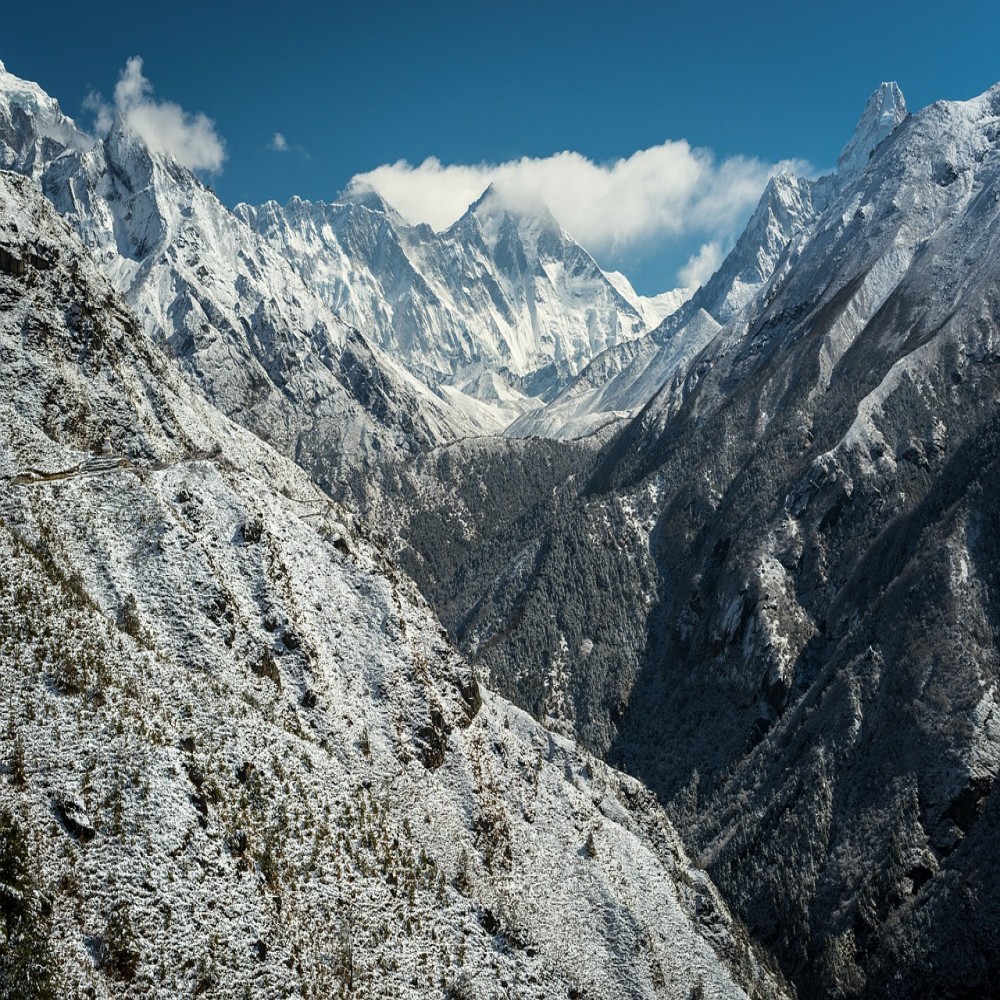Swagat Holiday Treks & Expeditions Pvt Ltd.
+977-9851002768 / +977-9860460464
Mount Ama Dablam Expedition
Trip Introduction
Mt. Amadablam expedition is one of the most charming expedition peaks in the Himalaya standing (6858m) tall. Every trekker who visits the Khumbu Region gets hypnotized with the magnificence of this Mountain. That’s why it is one of the favorites among different climbers all around the world. Located at the heart of the Khumbu region, the mountain sits just above the Tengboche Monastery, the largest monastery of the Everest region.
Ama Dablam means “Mother’s necklace”- the long ridges on each side look like an arm of the mother protecting her child. And the hanging glacier which resembles a “Dablam”, traditional jewelry containing the pictures of god, worn by Sherpa women, during your Ama Dablam expedition journey, you will pass through some of the most fascinating Sherpa Villages of Khumbu Region. You can also explore the Buddhist monastery and experience the immense influence of Buddhism in the lifestyle of people there. Besides the Sherpa and Buddhist culture, this expedition journey offers you the ultimate adventure experience in the Himalayas as the route is located with shortens, gompas, majestic forest, and unlimited Mysteries to unfold.
Ama Dablam is the third most popular Himalayan peak for the permitted expedition. Ama Dablam was the first climber on 13 March 1961 by Mike Gill (NZ), Barry Bishop (USA), Mike Ward (UK), and Wally Romanes (NZ) via the Southwest Ridge. There were well-acclimatized to altitude, having wintered over at 5800m near the base of the peak as part of the Silver Hut Scientific Expedition of 1960-61, led by Sir Edmund Hillary.
Mt. Amadablam expedition offers a technical climbing experience in an incredible setting with several cultural, local, and scenic diversions. Although the height of Ama Dablam is only (6812m), the expedition involves climbing steep ice, rock, and snow. You can find three camps during the Ama Dablam expedition above the basecamp. But, you will spend your night in only two of those base camps.
For the Ama Dablam Expedition, Southwest Ridge is considered to be the most appropriate trail to reach the pinnacle of the Ama Dablam. This route provides exhilarating rock with exposed ridge, snow, and ice climbing all the way to its summit via Dablam glacier. Besides that, an expedition through the Southwest ridge ensures optimal acclimatization and preparation for the summit. The climb is typically done with three camps along the ridge with camp III just below and to the right of the hanging glacier, the Dablam; so that any ice that calves off the glacier typically goes away form the camp.
Despite all the pleasant parts, it is quite stressed out that, the expedition journey requires a demanding climb as all the skill along with the endurance capacity of a mountaineer is examined. Climbing into the top of the world’s most adored pinnacle requires a dedicated mountaineer who has built up solid skills of rock climbing, ice climbing along with the experience of high altitude and general technical competency.
During your climbing expedition, you will follow the South-west ridge to Ama Dablam. The ascent from Ama Dablam base camp to camp 1 is challenging. Climbing Ama Dablam involves severe rock climbing through steep snow and ice runnel.
All of our guides and Sherpa have summited Ama Dablam and other Himalayan peaks countless times. This maximizes your safety and your opportunity to climb Ama Dablam successfully.
| Group Size : | Minimum 02 Pax | Max - altitude : | 6812 m / 22349 ft. |
| Destination : | Expedition Nepal | Fitness level : | Challenging |
| Arrival : | Kathmandu | Departure from : | Kathmandu |
| Meals : | Breakfast, Lunch & Dinner | ||
| Accomodation : | Double/Twin Sharing in Hotel/Lodge | ||
Day 01: Arrival in Kathmandu (1400m)
Day 02: Packing and preparation for Expedition
Day 03: Fly to Lukla (2700m/) and trek to Phakding (2640m), Duration: 35 min flight & 3-hour trek
Day 04: Trek to Namche Bazaar (3440m/), Duration: 5-6 Hrs
Day 05: Rest day / acclimatization day
Day 06: Trek to Pangboche (3900m) via Tengboche Monastery (3867m), Duration: 5-6 Hrs
Day 07: Trek to Ama Dablam Base Camp, Duration: 4 Hrs
Day 08: At Ama Dablam base camp preparation and acclimatization days
Day 09-23: Within 15 day’s expedition and the ascent of Mt Ama Dablam
Day 24: Clear the Campsite and Garbage at Base Camp
Day 25: Trek to Tengboche Monastery (3867m), Duration: 5-6 Hrs
Day 26: Trek to Namche Bazaar, Duration: 5-6 Hrs
Day 27: Trek to Lukla, Duration 4-5 Hrs
Day 28: Fly to Kathmandu and transfer to your hotel.
Day 29: In Kathmandu contingency and free day for individual activities
Day 30: Final departure to home country
Note: If the above itinerary does not meet your needs, we can design individualized travel plans based on your preferences. For more information please contact us at [email protected]
Day 01: Arrival in Kathmandu (1400m)
On arrival at Kathmandu Tribhuwan International Airport, our Swagat Holiday Treks & Expedition representative will receive you with warm welcome and greetings and then transfer to your respected hotel in the heart of Kathmandu city. After checking into rooms getting refreshed from Jet-Lag; a quiet environment after getting refreshed join the main hall or in the lobby where our guide will provide a briefing on Amadablam Expeditions, treks, and hotels with necessary information. The evening includes group dinner in a typical Nepali restaurant with a folk culture program with various dances of Nepal while having your authentic Nepalese dinner with the local environment.
Day 02: Packing and preparation for Expedition
Today we will hold a pre-trip meeting at your hotel where you will get a chance to ask questions regarding your trip. You will meet your guide and other fellow climbers who will go along with you on your journey.
This is a day to check your gear with your guides. If needed, there’s time to buy extra gear from local suppliers in town. Once the gear check is complete, you can sightsee for the rest of the day. Don’t miss some of Kathmandu’s world heritage sites (e.g. Boudhanath, Kathmandu and Patan Durbar Square). Kathmandu is a hectic city full of culture and historic sites.
Day 03: Fly to Lukla (2700m/) and trek to Phakding (2640m), Duration: 35 min flight & 3-hour trek
Early morning transfer to Kathmandu domestic airport for a super short flight to land at Lukla; the gateway to many adventures around the Khumbu region. From there, our walk journey starts on the gradual winding path past several Sherpa farm villages with views of Kongde and Kusum-Kanguru to reach overnight stop at Phakding, located by the glacial Dudh Koshi Rivers.
Day 04: Trek to Namche Bazaar (3440m/), Duration: 5-6 Hrs
Today walk leads to Namche Bazaar gaining altitude as walk progress, morning walk starts following the river and crossing several times to reach at Monjo village near Sagarmatha National Park entrance, from here walking on river valley and gorge covered within nice woodland of tall rhododendron-pines and fir trees. After crossing a high last bridge with few hours climb to Namche Bazaar with stunning views of Everest-Lhotse and Kongde peaks. Namche Bazaar at 3440m high and an ideal place for a rest day to acclimatize, the main town/village of Khumbu where the colorful and exciting market takes palace once a week.
Day 05: Rest day / acclimatization day
Today we will rest for acclimatization before heading higher terrain, the morning after breakfast with options for a hike to Everest view hotel or walk on top of Namche, where you can catch super landscapes scenery with Mt. Everest, Lhotse, Ama Dablam with series of high peaks, here enjoy visiting National Park Museum provides you with much information of Khumbu region, Sherpa history-culture-flora, and fauna including detail on mountaineering.
Day 06: Trek to Pangboche (3900m) via Tengboche Monastery (3867m), Duration: 5-6 Hrs
Enjoying pleasant time at Namche, morning walk leads to scenic and gradual walks overlooking Everest and other giant peaks, as our route leads downhill to the Imja-Tse River at Phurki Thenga, a small place with few lodges an ideal spot for a refreshing break or lunch stop. From the bottom with uphill walks into the enchanting alpine forest to reach Tengboche Monastery offers a grand panorama of mountains with Everest and Ama Dablam at close distance, here with time for a tour in the monastery and witness monks and priest on prayer. Tengboche also holds a colorful festival “Mani Rimdu” monks with mask dancing wading evil spirits which falls in the month of October as per the Buddhist lunar calendar. Afternoon catching super views of high peaks with Everest, our route descends into forested areas reaching a metal bridge, from here a slow climb encountering Mani (prayer) walls along the walks to Pangboche village for an overnight halt before Ama Dablam base camp, this is a last Sherpa permanent village on route to Everest and Ama Dablam base camp.
Day 07: Trek to Ama Dablam Base Camp, Duration: 4 Hrs
From Pangboche village with last overnight in a lodge, from here on tents with camping facilities as morning walk leads to a steep descend at Imja-Tse River, and then crossing over a small wooden bridge with strenuous climb away from mainstream trekking trails. As the walk continues overlooking grand views of Kangtega, Thamserku with Tengboche and Cholatse and getting close on the foot of majestic and towering Mt. Ama Dablam at base camp a wide grassy field to pitch our camps at Ama Dablam base camp.
Day 08: At Ama Dablam base camp preparation and acclimatization days
Today will be a rest day for acclimatization on this high elevation a fine place for leisure hike and walks around where a climb up to a hill offers tremendous scenery of peaks. Enjoying scenic excursion with afternoon free to catch up with your dairy and relax marveling at the views of Ama Dablam South West Face with other giant mountains.
Day 09-23: Within 15 day’s expedition and the ascent of Mt Ama Dablam
Ama Dablam Base Camp is one of the base camps which features huge grassland located on the high Himalayas of Nepal. You can enjoy playing volleyball and soccer at the base camp. From the camp, you can get the great views of Ama Dablam, Thamserku, Tengboche, and Kongde. Usually, the base camp is sunny due to its location. Here at the base camp the sun is out early and stays late into the day. During spring and autumn season there are a handful of trekkers i.e. approximately about 5 to 7 teams. You can get great views of Mountain peaks and the grassland is more beautiful during this season.
We have reserved a maximum of 15 days for the climb to the summit of magnificent Mt Ama Dablam, during 15 days where all climbers get busy loading and dividing gears for the final ascent to the summit and back at base camp after the climb to the top. From base camp walk follows on grassy moraine ridge heading eastwards into a broad saddle with views of Mingbo-La then towards the northern direction and then climb to a rocky area through the ridge of boulders beneath Pt.5,705 which is the site for Camp I. from here climb on snow and ice slope following a mix ground to the top of the highest hanging glacier, an ice crest leading to a nice position all the way to the summit of Ama Dablam rewards you with grand views of surrounding world highest peaks with Mt. Everest towards the north after a tough technical but exciting climb descend back safely to base camp using advance Camp on the downhill.
For the Ama Dablam Expedition, we will follow the standard climbing route via Southwest ridge with the typical arrangements of three high camps: camp I (5600m), Camp II (5900m), Camp III (6200m) with Base Camp at 4500m. All camps are arranged at the ridge of the mountains so that you can enjoy the heavenly views of the surrounding, which will also be the source of motivation to reach the pinnacle.
Camp I (5700m/18800ft.)
From the base camp of Ama Dablam camp, I am 5 hours further but the trail is mostly easy. Along the trail, you will notice a short section of casual rock scrambled about 100m in length. To reach camp I, you will need to climb some large boulder and climb some large boulder and climb an easy fourth-class slap. You will not be provided with any fixed rope in place. The camp I is not as flexible as base camp due to which you need to adjust with other climbers and share your tents. There’s roughly a place for six to seven double tents while the same amount for single tents.
Camp II (5950m/19521ft.):
Camp two is elevated at 5950m and climb from Camp I to Camp II is hardest during this expedition. The climbing includes fourth class horizontal rock ridge around several pinnacles and gendarmes, huge exposures with massive drop-offs on both sides of the ridge. You will find great quality granite during your climbing sessions. At the end of your climbing sessions, you need to climb the yellow tower for 6 meters which are French 4th class, British Severe, North American YDS 5.5. Once you climb the yellow tower you will arrive at Camp II.
Camp III (6200m/20341ft.):
The climb to Camp III includes ice and snow terrains make it a bit challenging. There is a various point where you will find fixed ropes for climbing purpose. The climb from camp II to camp III shifts over to mixed, ice, and snow terrain. You will have great views of Ama Dablam Base Camp, Kusum Kanguru, and Kantega while climbing through rough terrains of ice and snow. It is now time to traverse the infamous Mushroom Ridge at 6150m/20300ft. looking up at camp III (6300m/20800ft), with the Dablam above. Some strong climbers push for the summit from camp II. The route from the yellow tower to camp III is almost 55 degrees of slope most of the way.
Summit (6812m/22349ft.):
To summit Ama Dablam from camp three and return to camp two takes every climber about 10 hours. While summiting you will be dealing with some pitched of dramatic but very solid snow-ice (40 degrees +) while climbing to the side of Dablam. Once you finish these pitches you will reach a fluted snow/ice field (30-50 degree) leading you to one of the world’s finest summit. From the summit, you can see Khumbu and the astonishing panoramic views of Lhotse, Nuptse, Mount Everest, Cho Oyu, Pumori, Shisapangma, and Makalu.
Day 24: Clear the Campsite and Garbage at Base Camp
When all team members reach at Base Camp for final re-grouping, include guides and staff, to assist packing equipment and checking each member's health condition after the great climb of a lifetime experience. Start packing all climbing gears and disposing of garbage in proper sites, where SPPC (Sagarmatha Pollution Control) will check the camp and depositing the litter to take away from the base camp to disposal sites or back to Kathmandu.
Day 25: Trek to Tengboche Monastery (3867m), Duration: 5-6 Hrs
Morning clearing the last remaining tents and equipment with rubbish to carry or to hand over to SPCC (Sagarmatha Pollution Control Committee) after loading gears on Yaks and another beast of burden, then leave the base camp on the easy downhill and uphill trail to Pangboche Village. Having a refreshing rest at Pangboche, continue to walk towards Tengboche Monastery for overnight stop and back into green vegetation and tree lines.
Day 26: Trek to Namche Bazaar, Duration: 5-6 Hrs
We will walk on the same route descend back to Imja-Tse River at Phurki Thang and climb for an hour to reach a small place at Kyanjinma, from here on a pleasant wide winding path to Namche Bazaar for overnight stop after a pleasant scenic day walk.
Day 27: Trek to Lukla, Duration 4-5 Hrs
Today will be your last day of this trek, the marvelous adventure leads on the same scenic trail to Phakding on following Dudh Koshi River downstream, from here a pleasant walk with few short ups and down to Choplung village, where an hour climb brings you back at Lukla for lunch and overnight stop. On Lukla celebrate last night dinner among fellow climbers, guides, and porters after a fantastic time on Mt. Ama Dablam Expedition and trekking.
Day 28: Fly to Kathmandu and transfer to your hotel.
Early in the morning after breakfast, we will head to Lukla air terminal named Tenzing Hillary airport, a tribute to late legendry Mountaineers the first to conquer Mt. Everest. As per the flight time board in small aircraft (Dornier or Twin Otter) a scenic 35 minutes flight brings you to hustle and bustle city life of Kathmandu, on reaching Kathmandu transfer to your respective hotels with afternoon free at leisure.
Day 29: In Kathmandu contingency and free day for individual activities
A spare and contingency day in Kathmandu we have reserved two days in case of flight delay and cancellation at Lukla due to unavoidable conditions like unfavorable bad weather conditions, which in some part of the adventure being in the Himalayan region. Well as per the plan with normal flight time, this day to be used for your own individual activities and shopping souvenirs or join in for another exciting tour around Kathmandu-Patan and Bhaktapur for a delightful sightseeing tour around world heritage sites and seeing more of Nepalese culture. This day is a free day to relax.
Day 30: Final departure to home country
Last day in the country of high beautiful Himalayas as per your international flight transfer to Kathmandu international airport for homeward bound or to next port of call after a wonderful and overwhelming adventure on Mt. Ama Dablam Expedition and trekking with great service and management of Swagat Holiday Treks & Expedition.
This will be your final day in this awesome country of the Himalayas Nepal. We will drop you at the airport a couple of hours before your scheduled flight. Before leaving for the airport, you need to confirm that you have secured tour air ticket as well as other travel-related documents. We wish you have a wonderful departure back home. We can also arrange for another trip to Nepal in case you want to.
COST INCLUDE
-
Airport / Hotel / Airport pick up & drop off service by a private tourist vehicle. (for both international and domestic flights).
-
Welcome Dinner at Typical Nepalese Restaurant with a cultural dance show.
-
2 Night standard twin-sharing accommodation in a hotel in Kathmandu including breakfast.
-
Basic guesthouse accommodation during the trek in mostly twin-share and occasionally dormitory-style rooms.
-
Three meals a day: Breakfast, Lunch, and Dinner during the trekking.
-
A Highly experienced, Helpful, Knowledgeable, friendly, well-trained Government license holding English-speaking trekking guide.
-
We provide an assistant guide for walking with the group to support where necessary as per group size.
-
National Park entrance fee and Trekkers Information Management System (TIMS card).
-
The required number of local staff and porters to carry your luggage during the trek (We assign one porter for every two guests.)
-
Food, accommodation, insurance, equipment, and medicine for all staff.
-
Everest National Park permits and Khumbu permit for trekking.
-
Airfare from Kathmandu – Lukla - Kathmandu including airport departure tax in Kathmandu and Lukla airports.
-
Arrangement of emergency evacuation service (should have insurance for emergency evacuation and will be paid by your Travel Insurance Company).
-
All applicable government taxes, vat, tourist service charges as per Itinerary.
COST EXCLUDE
-
Your Nepal Visa Fees (should bring small accurate fees in USD and 02 passport size photos)
-
All the International airfare to and from Kathmandu ( no need to pay departure tax for international flight)
-
Lunch and Dinner during staying in Kathmandu
-
Personal travel and Health insurance as well as insurance for helicopter evacuation
-
In case of extra night’s accommodation, Lunch and Dinner in the city due to early arrival or departure as well as early back/return from Mountain/Trekking(due to any reason) than the given time period of Itinerary. We can help you arrange extra nights’ accommodation.
-
Your personal expenses such as (soft beverages, confectionaries, laundries, phone calls, bar bills, Extra porter, etc.)
-
Extra baggage excess while flying to Lukla.
-
Medical expenses and trip cancellation.
-
Any other extended trips and accommodation.
-
Tips of the guide, porters, and driver as a token of appreciation.
# Any other expenses or charges that are not mentioned in the “cost includes” list.
Leave a Review
Things to know before trekking
The main flow of foreign visitors in Nepal is for trekking from moderate to adventurous or challenging treks, the most important is choosing the right trip as per your duration of holiday and fitness, for Annapurna Himalayan trekking adventure one needs to be in sound health and physically fit.
On booking with our preparation of fitness required like walking, jogging, Jumba-aerobic at least fifteen days before your departure from the home country.
Please send us your dietary list and medical history report so that we can arrange well in advance respectively. Book the ticket from home for Kathmandu, Nepal to reach at least two days ahead and earlier from trek departure with much space in Kathmandu after the trek, this allows you with more time Nepal to enjoy the culture and heritage sites of Nepal.
If you are wondering about how to obtain a Nepal visa, then the easiest way to obtain it is at the Tribhuwan International Airport upon your arrival in Nepal or else at the immigration entry point if you are entering through the border of India or Tibet.
Note: There are few countries namely Nigeria, Nigeria, Ghana, Afghanistan, Zimbabwe, Somalia, Cameroon, Swaziland, Iraq, Ethiopia, Liberia, Palestine, etc. People from these countries do not get a visa from the immigration entry points of Nepal.
Equipment and Gears
-
Duffle Bag\Rucksack Bag\ Suitcase (We provide one complimentary Swagat Holiday Duffle Bag that is to be returned after the trip)
-
One pair of a walking stick
-
Trekking Shoes
-
Sports shoes or sandals
-
Sun Hat/Cap
-
Basic Medical Kits
-
Head Lamp
-
Hand Sanitizers
-
Trekking towels
-
Sunglasses (UV Protection)
-
Warm Hand gloves ( Inner & Outer)
-
Warm woolen cap
-
Warm fleece jacket or puffy jacket
-
Waterproof Gore-Tex layer
-
Pullover or warm sweeter
-
Raincoat
-
5/6 pairs of good quality socks
-
2\3 pairs of trekking trousers
-
3\4 pairs of trekking shirts
-
5\6 pairs of underwear( non-cotton preferred)
-
Water bottle
-
Good quality Sleeping Bag
-
Camera and Batteries
Trip Location Map
